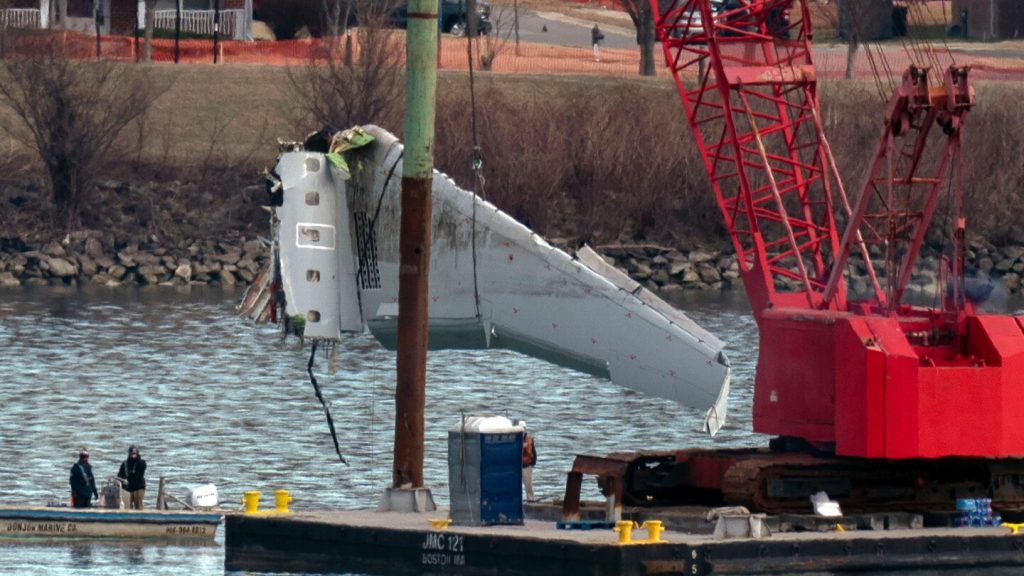Listen to the article
Military Aircraft Accidents Surge 55% in 2024, Continuing into 2025
The number of major military aircraft accidents spiked dramatically in 2024, with the rate of severe mishaps rising 55% compared to four years earlier, according to internal Pentagon figures released to Congress and obtained exclusively by The Associated Press.
Across all branches, 25 service members and Defense Department civilian employees lost their lives and 14 aircraft were destroyed in just the first 10 months of the 2024 budget year. The Marine Corps faced the steepest increase, with its severe accident rate nearly tripling during the same period.
The troubling data, which tracks Class A mishaps resulting in death or permanent disability, has prompted congressional scrutiny. Senator Elizabeth Warren, who requested the figures following several deadly V-22 Osprey accidents, called the statistics “incredibly troubling” and emphasized the need for legislative changes to make accident reports more accessible.
“These changes are desperately needed so Congress can understand the root causes of these accidents to save service member lives,” Warren stated.
Several aircraft types have proven particularly accident-prone. The V-22 Osprey, which can take off like a helicopter but fly like a plane, continues to show concerning safety trends. Apache helicopter accidents increased 4.5 times over the four-year period, while the military’s workhorse C-130 transport aircraft nearly doubled its accident rate.
The Navy has seen a particularly sharp rise in 2025, with Naval Safety Command reporting 14 Class A aviation mishaps already this year, compared to just eight in all of 2024.
Aviation expert John Nance, a former military pilot, points to multiple factors contributing to the troubling trend, including operational demands, riskier aircraft designs, and lingering effects from the COVID-19 pandemic, which severely limited flying time.
“Whether we’re talking about the end of Afghanistan, deployments to Djibouti, or operations across Saudi Arabia, I think that as the pace of military operations ticks up, the mishaps are going to tick up,” Nance explained.
The Pentagon acknowledged these concerns in a statement, saying the trends “underscore the importance of safety and readiness at every level” while noting that military leaders “regularly review and improve our processes, share lessons learned from mishaps, and reduce safety risks.”
The Navy added that its aviators routinely operate in “incredibly complex conditions” and that the service treats “every flight and ground evolution as an opportunity to develop better training, create more effective procedures, and safeguard operational readiness.”
Several high-profile accidents in 2025 suggest the concerning pattern is continuing. In January, an Army helicopter collided with a passenger jet over Washington, D.C., killing 67 people. Subsequent investigations revealed the Black Hawk helicopter had a broken altimeter, issues with night vision equipment, and highlighted FAA failures to address known dangers in the area.
USS Harry S. Truman aircraft carrier experienced two F/A-18 Super Hornet losses within weeks – one from a landing accident and another that slid off the deck into the sea. In December 2024, the guided-missile cruiser USS Gettysburg mistakenly shot down an F/A-18. Fortunately, no aviators died in these incidents.
More recent accidents include four Army soldiers who perished when their Black Hawk helicopter crashed during a training mission in Washington state in September. In October, both a fighter jet and a helicopter from the USS Nimitz crashed into the South China Sea within 30 minutes of each other, though no fatalities occurred.
Nance suggested the pandemic’s disruption of training schedules might still be affecting operational safety. “The safety buffer is impacted by a million things,” he noted, with the pandemic representing “a major impact on operational capabilities.”
Senator Warren’s office is now seeking more comprehensive data from the Pentagon, including figures on less severe Class B and C mishaps from 2019 through 2025, along with information about aircrew and maintenance training protocols.
The mounting evidence of safety issues across multiple aircraft platforms and branches of service indicates a systemic problem requiring urgent attention from military leadership and congressional oversight to prevent further loss of life and equipment.
Fact Checker
Verify the accuracy of this article using The Disinformation Commission analysis and real-time sources.




10 Comments
It’s troubling to see such a sharp rise in military aircraft accidents, especially with the loss of life involved. Transparent reporting and congressional oversight will be crucial to understanding and addressing the root causes.
This data really highlights the urgent need for improved aircraft safety and maintenance protocols across the military. The loss of life is devastating, and the impact on readiness is deeply concerning.
You’re right. Congress must ensure the Pentagon has the resources and oversight to make the necessary changes to protect our service members.
With the stakes so high, these accident rates are incredibly alarming. I hope the Pentagon’s investigation can quickly uncover the root causes and implement effective solutions to prevent future tragedies.
A 55% rise in military aircraft accidents is incredibly concerning. Our service members put their lives on the line, and they deserve the safest possible equipment. I hope the Pentagon can swiftly address the underlying causes.
Absolutely. Transparency and accountability will be key to finding and fixing the issues.
This is a very worrying trend. Increased military aircraft accidents put lives at risk and strain resources. I hope Congress can get to the bottom of the issue and implement safety measures to protect our service members.
This is a serious issue that deserves close investigation. While accidents can happen, a 55% increase in one year is very worrying. I’m glad to see Congress taking an active role in uncovering the problems and pushing for solutions.
A 55% spike in major military aircraft accidents is extremely worrying. Our service members deserve the safest possible equipment to carry out their critical missions. I hope the Pentagon can act swiftly to address this issue.
The data is certainly concerning. Reliable air power is critical for national defense, so it’s alarming to see such a spike in major accidents. I hope the Pentagon can quickly identify the issues and implement fixes to improve safety.